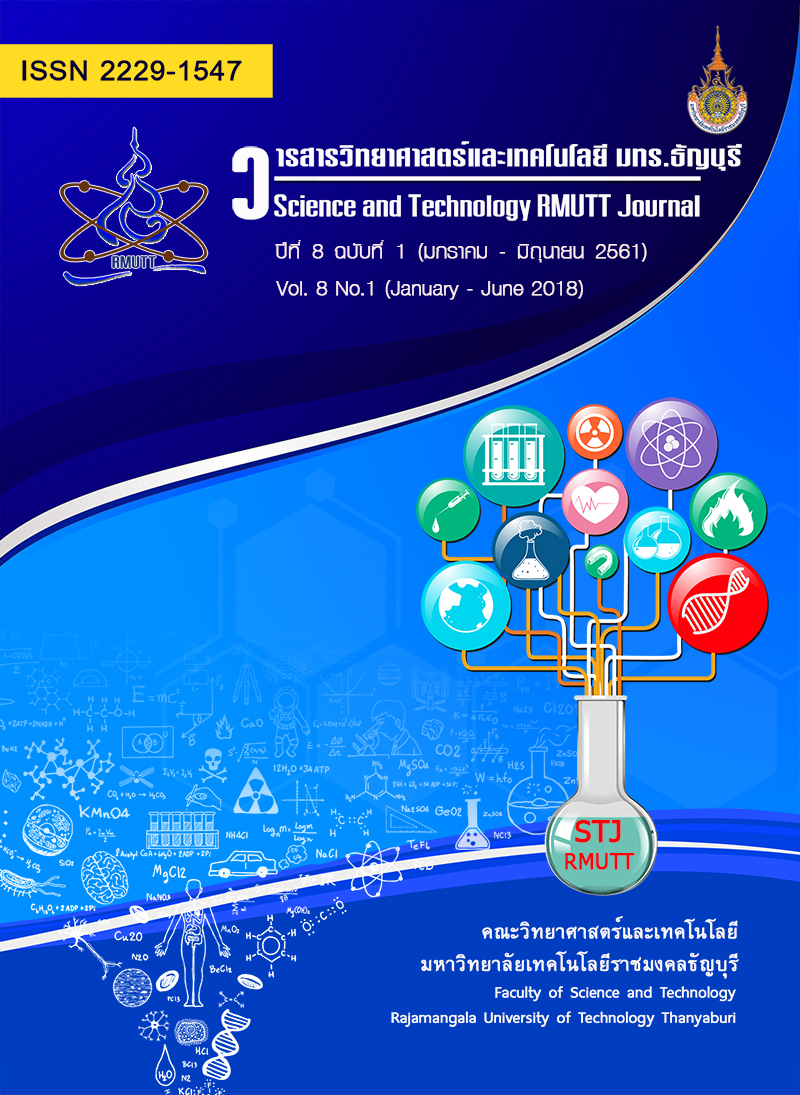Greenhouse Gases Emission of Organic Car Wax Processing from Rice Bran Oil
Main Article Content
Abstract
In this research, an analysis of the greenhouse gases (GHG) emission of the organic car wax processing from rice bran oil was experimented. By considering the life cycle of the car wax products, the extent of the GHG emissions (during the rice cultivation, rice milling and transportation, refinery of rice bran oil) was examined and studied. To do this, a functional unit (FU) of 100 grams of a car wax product was used. Accordingly, the emission of greenhouse gases from rice cultivation following a conventional cultivation method (i.e., with chemical fertilizer) was compared with rice cultivation with organic fertilizer. The results showed that the life cycle greenhouse gas emissions, expressed in g CO2 equivalents, were 20-21 kgCO2-eq/FU for rice cultivation based on the conventional cultivation, whereas the extent of the greenhouse gas emission of the rice cultivation (with organic fertilizer) was found to be 21-22 kgCO2-eq/FU, respectively. Furthermore, in this study the influence of the rice cultivation (with organic fertilizer and chemical fertilizer) on emission of GHG was discussed comparatively. The findings showed that a major share (i.e., more than 98%) of the GHG through rice cultivation was found in both systems. However, the extents of the energy consumption during the rice milling, refinery of rice bran oil, and car wax formulation and transportation were led to emission of a minor share of the GHG. Consequently, new cultivation technology should be employed (and highly recommended) in order to decrease the potential threats of the global warming associated with the car wax production.
Article Details
References
OAE (Office of Agricultural Economics). Agricultural Economic Report: 3rd Quarter 2017 and Outlook for 2017. www.oae.go.th/download/bapp/2560/OutlookQ3_2560.pdf (accessed 17 December 2017).
FAO (Food and Agriculture Organization of United Nations). Rice Market Monitor. 2017. http://www.fao.org/fileadmin/templates/est/COMM_MARKETS_MONITORING/Rice/Images/RMM- Jul17.pdf (accessed on 17 December 2017).
Rodhe H. A comparison of the contribution of various gases to the greenhouse effect. Science. 1990. 248: 1217-1219.
Ferry J. G. Biochemistry of methanogenesis. Critical Reviews in Biochemistry and Molecular Biology. 1992. 27(6): 473-503.
ONEP (Office of Natural Resources and Environmental Policy and Planning, Ministry of Natural Resources and Environment of Thailand). 2011. Thailand’s Second Nation Communication under UNFCCC on Climate Change. https://unfccc.int/files/national...i.../snc_thailand.pdf (accessed 19 June 2015).
ISO 1404. Environmental management: Life cycle assessment, Principles and guideline, International Organization for Standardization, Geneva. 2006.
IPCC. Guidelines for national greenhouse gas inventories, In:National Greenhouse Gas Inventories Programme, Intergovernmental Panel on Climate Change. 2006.
TGO. Thailand Greenhouse Gas Management Organization (Public Organization). Product Category Rules: PCRs of rice production. 2013.
Milling and processing-IRRI Rice Knowledge Bank. 2015. http://www.knowledgebank.irri.org/ step-by-step-production/postharvest/milling
Mungkung R., Gheewala S.H., Poovarodom N. and Towprayoon S. Carbon footprint of rice products. Kasetsart Engineering Journal. 2011. 24: 53-60 (in Thai).
Thai Community Product Standard. 2011. http://tcps.tisi.go,th/public/StandardList.aspx (accessed 14 August 2017).
Wenzel H., Hauschild M. and Alting L. Environmental assessment of products: Volume 1 Methodology, tools and case studies in product development, Chapman & Hall, UK. 1997.
Thanawong M., Perret S. and Mens C.B. Eco-efficiency of paddy rice production in Northeastern Thailand: a comparison of rain-fed and irrigated cropping systems. Journal of Cleaner Production. 2014. 73: 204-217.
Yan M., Cheng K., Luo T., Pan G. and Rees R.M. Carbon footprint of grain crop production in China-based on farm survey data. Journal of Cleaner Production. 2015. 104: 130-138.
Yodkhun S., Gheewala S.H. and Sampattagul S. Life cycle GHG evaluation of organic rice production in Northern Thailand. Journal of Environmental Management. 2017. 196: 217-223.
Rice bran wax wins award for adding value. 2012. http://www.bangkokpost.com/print/313154/ (accessed on 14 August 2017).


